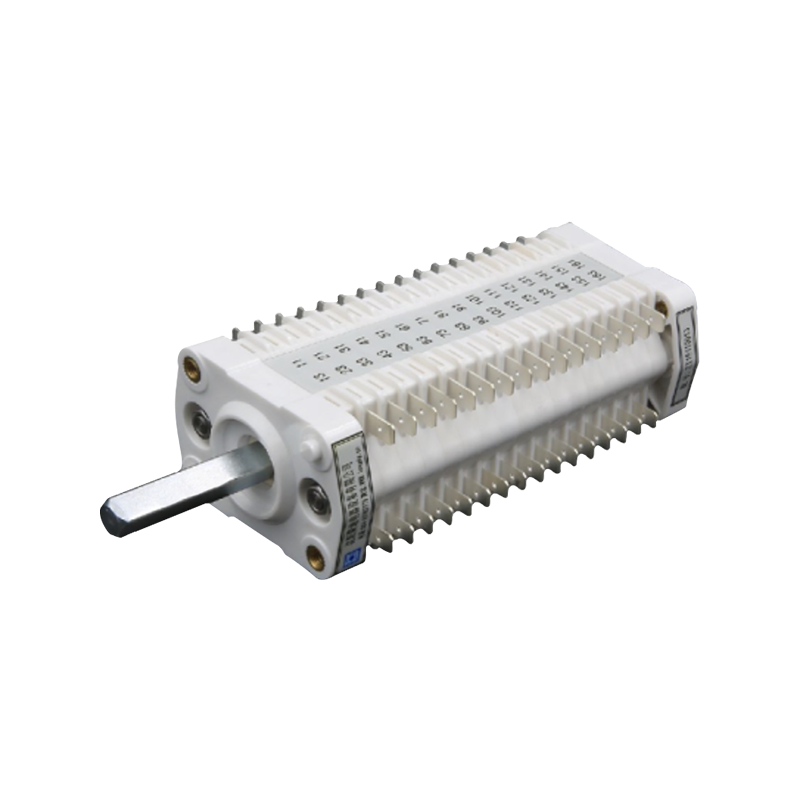

Auxiliary switches in high-voltage equipment: A tool for increasing safety and efficiency
Release time:2023-12-18
Auxiliary switches in high-voltage equipment: A tool for increasing safety and efficiency
Auxiliary switches play an important role in modern high-voltage equipment. They not only improve the safety of the equipment, but also provide a strong guarantee for the stable operation of the equipment. This article introduces the features, advantages and application scenarios of auxiliary switches used in high-voltage equipment.
I. Features of Auxiliary Switches
High reliability: Auxiliary switches are made of high-quality materials and are rigorously tested to ensure stable operation in harsh environments.
High efficiency: Auxiliary switches operate accurately and quickly to meet the high requirements of high-voltage equipment on switching performance.
Safety: The auxiliary switches are equipped with overload protection, short circuit protection and other functions to effectively prevent equipment damage and accidents.
Easy maintenance: the auxiliary switch has a simple structure, which is convenient for users to carry out routine maintenance and repair.

Second, the advantages of auxiliary switch
Improve the safety of equipment: The auxiliary switch can cut off the power supply in time to avoid equipment overload, short-circuit and other faults, and protect the safety of operators and equipment.
Extend the service life of the equipment: through the reasonable use of auxiliary switches, the equipment failure rate can be reduced, thus extending the service life of the equipment.
Reduce operating costs: The high reliability of auxiliary switches reduces the frequency of maintenance and replacement, reducing operating costs.
Improve production efficiency: In high-voltage equipment, auxiliary switches can quickly respond to and control the operating status of the equipment, improving production efficiency.
Application Scenarios

Power industry: Auxiliary switches are widely used in power plants, substations and other power facilities to provide strong support for the stable operation of high-voltage equipment.
Industrial automation: In automated production lines, robots and other industrial equipment, auxiliary switches can accurately control the running state of equipment and improve production efficiency.
Transportation: High-voltage equipment in high-speed railways, subways and other means of transportation also need to use auxiliary switches to ensure safe and stable operation.
New Energy: Auxiliary switches are used in new energy generation systems such as photovoltaic and wind power to ensure the normal operation of high-voltage equipment.
In short, auxiliary switches for high-voltage equipment are a powerful tool for improving safety and efficiency. They are widely used in various fields and provide a strong guarantee for the stable operation of high-voltage equipment. Choosing high-quality auxiliary switches can bring more safety and convenience to your production and life.
Auxiliary switches play an important role in modern high-voltage equipment. They not only improve the safety of the equipment, but also provide a strong guarantee for the stable operation of the equipment. This article introduces the features, advantages and application scenarios of auxiliary switches used in high-voltage equipment.
I. Features of Auxiliary Switches
High reliability: Auxiliary switches are made of high-quality materials and are rigorously tested to ensure stable operation in harsh environments.
High efficiency: Auxiliary switches operate accurately and quickly to meet the high requirements of high-voltage equipment on switching performance.
Safety: The auxiliary switches are equipped with overload protection, short circuit protection and other functions to effectively prevent equipment damage and accidents.
Easy maintenance: the auxiliary switch has a simple structure, which is convenient for users to carry out routine maintenance and repair.

Second, the advantages of auxiliary switch
Improve the safety of equipment: The auxiliary switch can cut off the power supply in time to avoid equipment overload, short-circuit and other faults, and protect the safety of operators and equipment.
Extend the service life of the equipment: through the reasonable use of auxiliary switches, the equipment failure rate can be reduced, thus extending the service life of the equipment.
Reduce operating costs: The high reliability of auxiliary switches reduces the frequency of maintenance and replacement, reducing operating costs.
Improve production efficiency: In high-voltage equipment, auxiliary switches can quickly respond to and control the operating status of the equipment, improving production efficiency.
Application Scenarios

Power industry: Auxiliary switches are widely used in power plants, substations and other power facilities to provide strong support for the stable operation of high-voltage equipment.
Industrial automation: In automated production lines, robots and other industrial equipment, auxiliary switches can accurately control the running state of equipment and improve production efficiency.
Transportation: High-voltage equipment in high-speed railways, subways and other means of transportation also need to use auxiliary switches to ensure safe and stable operation.
New Energy: Auxiliary switches are used in new energy generation systems such as photovoltaic and wind power to ensure the normal operation of high-voltage equipment.
In short, auxiliary switches for high-voltage equipment are a powerful tool for improving safety and efficiency. They are widely used in various fields and provide a strong guarantee for the stable operation of high-voltage equipment. Choosing high-quality auxiliary switches can bring more safety and convenience to your production and life.
